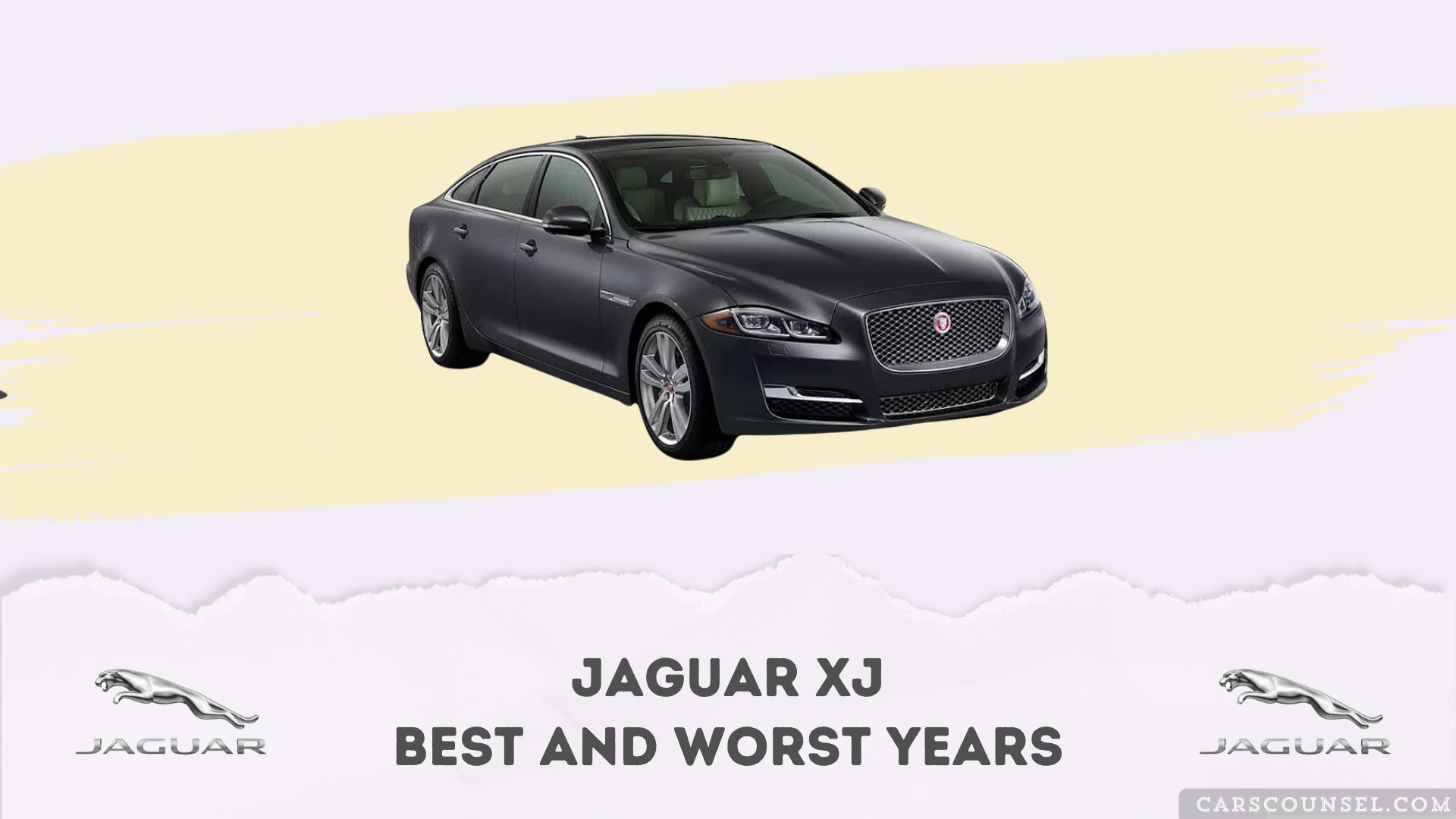You’ve probably heard the rumor that the Jaguar XJ has had its fair share of reliability issues over the years. But is it true? Let’s take a closer look at the model’s history to separate fact from fiction.
From the troubled 1975-1982 models to the improved 1982.5-1987 ones, each generation has its own unique set of problems – and solutions. What’s behind the XJ’s notorious reputation, and which years should you avoid or seek out?

Quick Navigation
Key Takeaways
- The 1995-1997 XJ models are considered the best years due to simpler electronics and improved engines, making them more reliable.
- The 1997-2000 V8 engine models are the worst years due to Nikasil cylinder lining issues, timing chain problems, and engine death.
- The 1975-1982 and 1988-1990 models are bad years due to unreliability, while the 1982.5-1987 models are good years with more reliability.
- The X300 XJR models have specific issues like water pump failure, cooling fan motor failure, and ABS accumulator problems at certain mileage intervals.
- Post-1992 Jaguars, including the XJ, are generally more reliable than earlier models due to quality and reliability improvements after the Ford takeover.
Ranking Jaguar XJ Generations by Reliability
When evaluating the reliability of Jaguar XJ generations, it’s essential to weigh the model years and their respective improvements.
The XJ40 and X300 generations stand out as reliable options, with the 1993-1994 and 1995-1997 models being the most dependable. These used luxury cars have simpler electronics and improved engines, making them a good choice for those seeking a reliable Jaguar XJ.
Post-1992 Jaguars, including the XJ, are generally more reliable than earlier models, thanks to the brand’s quality and reliability improvements after the Ford takeover.
Model-Specific Issues and Reliability
While shopping for a used Jaguar XJ, it’s crucial to be aware of model-specific issues that can impact reliability. Different generations have unique problems that can affect your ownership experience.
For instance, the Jaguar X300 XJR has specific issues like water pump failure, cooling fan motor failure, and ABS accumulator problems at certain mileage intervals.
| Model | Issue | Mileage |
|---|---|---|
| X300 XJR | Water pump failure | 150K miles |
| X300 XJR | Cooling fan motor failure | 150K miles |
| X300 XJR | ABS accumulator problems | 100K miles |
| 1997-2000 V8 engines | Nikasil cylinder lining issues | N/A |
| 1997-2000 V8 engines | Timing chain problems | N/A |
Bad and Good Years for Jaguar XJ in the US
You’re likely wondering which years to focus on or avoid when shopping for a used Jaguar XJ in the US.
In terms of reliability, the 1975-1982 Jaguar XJ models are considered bad years due to their unreliability.
On the other hand, the 1982.5-1987 models are considered good years, offering more reliability.
The 1988-1990 models are bad years again, while the 1995-1997 models are good years with simpler electronics making them more reliable.
Be cautious of the 1998-early 2000 models, which are plagued by V8 engine issues, cylinder damage, and engine death, making them some of the worst years for this luxury car.
Used Jaguar XJ Models and Prices
Now that you’ve narrowed down your search to the good years, it’s time to investigate the various used Jaguar XJ models and their corresponding prices.
As a luxury car, the Jaguar XJ’s prices vary depending on the generation, trim level, and condition.
You can find used XJ models from the 2004-2009 generation, priced between $10,000 and $20,000.
The 2010-2015 generation is priced slightly higher, ranging from $20,000 to $35,000.
The latest generation, 2016-2019, is the most expensive, with prices starting at $40,000 and reaching up to $60,000.
Research and compare prices to find the best deal for your budget.
Opinions and Preferences on Jaguar XJ Generations
The debate surrounding Jaguar XJ generations is a contentious one, with enthusiasts and owners often disagreeing on which era best represents the iconic luxury sedan.
You’ll find that opinions on the best Jaguar XJ generation vary widely, depending on personal taste and priorities.
When ranking every Jaguar XJ generation, some prefer the sleek lines of the Series I, while others appreciate the technological advancements of the X351.
- Series III (1979-1992): Praised for its classic design and robust V12 engine.
- X308 (1997-2003): Loved for its sleek styling and improved performance.
- X350 (2003-2009): Admired for its modern amenities and refined ride.
- X351 (2010-2019): Favored for its cutting-edge tech and luxurious interior, solidifying Jaguar’s flagship status in the British luxury market.
When looking at performance cars, make sure to check out our guides on models like the Jaguar F-Pace, Jaguar XK, Jaguar XF and Jaguar F-Type. Knowing which model years to target and which to avoid is crucial. Our expert reviews break down these models, providing insights into the years that are celebrated for their engineering excellence and driving satisfaction, as well as those that are best to avoid due to potential issues.

